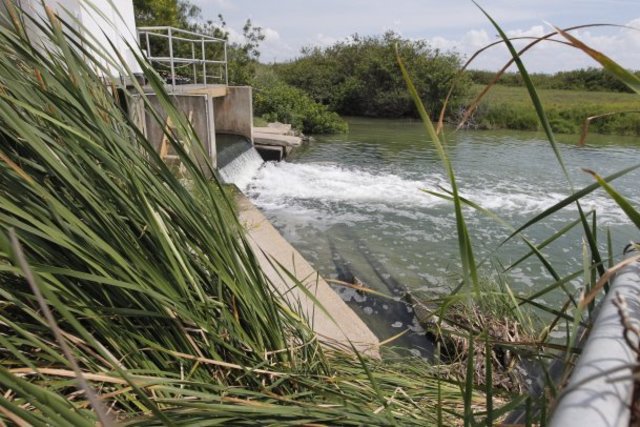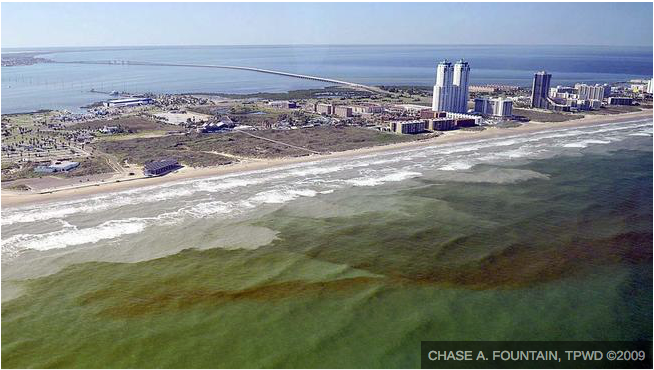
Water that returns to surface or ground water after human use is collectively called return flow. Return flows have been utilized for human use including sewage, washing, industrial uses, irrigation, and many others (USGS 2013d). Return flows are a source of freshwater inflows into estuaries. Return flows often contain high amounts of nutrients, sediments, and organisms. The effects of return flows vary but are often negative. Nutrient loading in estuaries is largely attributed to return flows (Montagna 2013). Treated wastewater can return to surface or groundwater in different ways. One of the ways wastewater is returned is by a user to a septic system that is on the users’ property directly to the groundwater system (USGS 2013d). Rural areas commonly use this method. Another way wastewater is returned by larger communities or cities is from treatment facility systems (USGS 2013d). Users release their wastewater into sewage networks that reach the treatment facility and are treated and released back into the system.
Industrial water can also be returned to surface or groundwater systems by using nondomestic on-site wastewater treatment systems to treat the water and return it to ground or surface water systems (USGS 2013d). Industrial is water that has been used to assist in manufacturing of steel, paper, chemicals, and many other commodities (USGS 2013d).
Agricultural returns are flows that have been used for irrigation and are not absorbed by plants or evaporated and enter groundwater or streams and rivers. Agricultural returns often contain nutrients and chemicals used in fertilizers and pesticides. The harmful chemicals and excess nutrients can cause negative effects in an estuarine system including harmful algal blooms.
